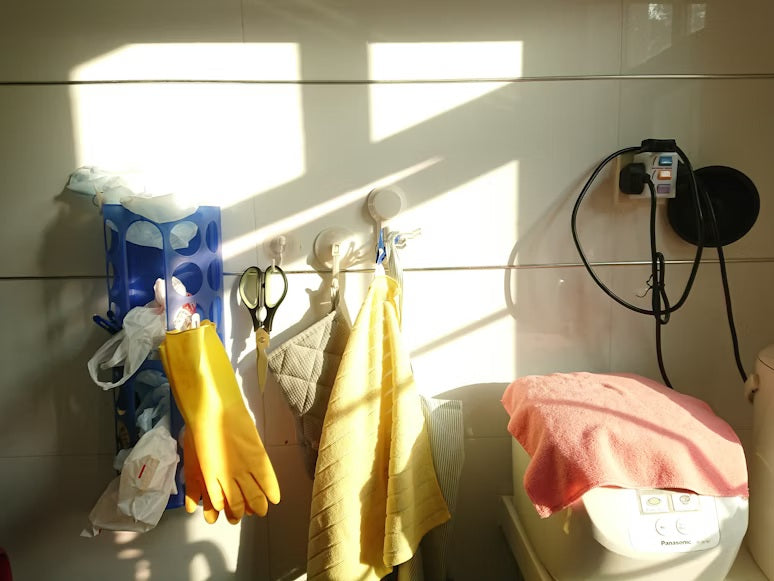
How Do Professional Odor Eliminators Work?
Share
Whether you run a cleaning business or simply want to maintain a fresh-smelling home, unpleasant odors are a common—and persistent—problem. From pet accidents and smoke to mold and food waste, unpleasant smells can quickly ruin the comfort of an interior space. That's where professional odor eliminators come in.
Unlike simple air fresheners, these products don't just mask the odor – they neutralize the source.

In this article, we discuss how professional odor eliminators work, the science behind them, and why they're essential in cleaning and restoration services.
What Are Professional Odor Eliminators?
Professional odor eliminators are cleaning agents specially formulated to remove, neutralize, or break down odor-causing molecules at their source.
They are widely used in sectors such as:
- Carpet and furniture cleaning
- Hospitality and real estate management
- Animal care and boarding
- Restoration services (such as smoke, flood, and mold damage)
- Auto detailing
Unlike household deodorants, these solutions are designed for deep odor neutralization and target specific chemical compounds rather than masking them with perfume.
The Science Behind Odor Neutralization
To understand how professional odor removers work, you need to understand what causes odors. Most unpleasant odors are caused by volatile organic compounds (VOCs)—molecules that easily evaporate and release odors.
Odor removers use chemical or biological processes to:
- To absorb odor molecules
- To neutralize or change their structure so that they no longer emit odor
- Destroying the bacteria or enzymes that cause the odor
Let's take a look at the most common types of odor eliminators and how they work:
Types of Professional Odor Eliminators and How They Work
1. Enzymatic Odor Eliminators
Highly effective against organic odors such as urine, sweat, vomit, and food waste. These products contain living enzymes or bacteria that break down organic matter.
Operation:
- Enzymes digest proteins, fats and starches that cause odor
- Once the source is removed, the smell will disappear
- Safe for use on fabric, carpet and hard surfaces
Best Use: Pet accidents, food scraps, and bodily fluids
2. Oxidizing agents
These use chemical reactions to break down odor-causing molecules. Hydrogen peroxide is a common example.
Operation:
- Oxidation changes the chemical structure of the VOC
- Neutralizes odors at the molecular level
- Ideal for stubborn odors such as smoke or mold
Best use: Fire damage, mold, sewage, industrial odors
3. Activated Charcoal or Carbon
Absorbs VOCs at the molecular level through porous structures.
Operation:
- The pores attract and retain fragrances
- Odors are removed from the air
- Often used in air purifiers or gel products
Best Application: Continuous odor control in small spaces such as wardrobes, cars
4. Ozone Generators (for professional use)
Ozone (O₃) is used to oxidize and destroy odor particles.
Operation:
- Reacts chemically with odor particles in air and on surfaces
- Destroys bacteria, fungi and VOCs
- Requires careful application due to health risks
Best Application: Fire, flood, or car cleaning restoration
5. Citrus-Based Odor Eliminators
Contains natural citrus oils such as d-limonene that neutralize odors and leave them smelling fresh.
Operation:
- Break down grease and organic waste
- Safe for surfaces and textiles
- Also has a mild degreasing effect
Best Application: General use in homes, hotels and offices
Why Do Professionals Choose Specialized Odor Eliminators?
Professionals prefer these advanced formulas because:
- Effective source removal instead of masking
- Safe on commercial surfaces and materials
- Long-lasting effect with odor-blocking substances
- Customized solutions per industry or fragrance type
- Compatible with deep cleaning extraction equipment
How to Use Professional Odor Eliminators Correctly?
For optimal results, follow these guidelines:
-
Identify the source
Find out where the smell is coming from – carpet, upholstery, ventilation system or floor. -
First clean the surface
Remove visible stains beforehand. A clean surface improves effectiveness. -
Apply correctly
Use the correct dilution, exposure time and method (spraying, fogging, extraction). -
Provide good ventilation and drying time
Essential for enzymatic and oxidizing products for complete neutralization.
KD's Line of Professional Fragrance Solutions
Looking for powerful, tested solutions? KD offers a complete range:
- KD Enzyme Cleaner – For organic pet and food odors
- KD CitrusFresh Deodorizer – Daily use with natural fragrance
- KD Smoke & Mold Neutralizer – For restoration and deep neutralization
- KD Rinse Additive with Odor Control – For a fresh finish in carpet cleaning
Trusted by professional cleaning companies, carpet cleaners, and restoration teams.
Final thoughts
Professional odor eliminators go far beyond superficial air freshening. By combating the source of odor and breaking down odor-causing compounds, they deliver long-lasting results that meet industry standards.
Consider enzymatic, oxidative, or citrus solutions depending on the type of odor. For consistent results, choose a professional brand like KD, with specialized products for every cleaning situation.
